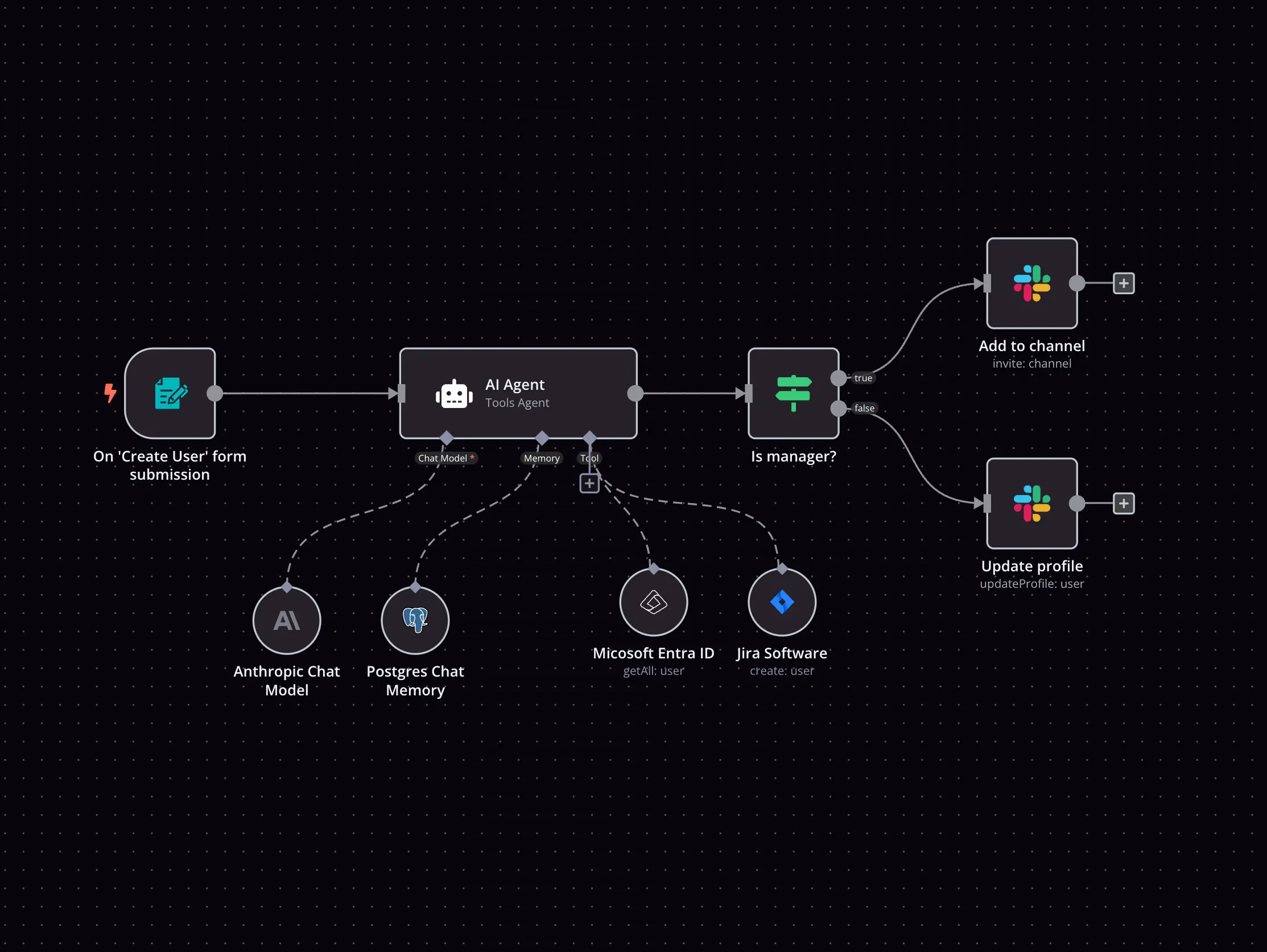Google Gemini Chat Model and WhatsApp Business Cloud integration
Save yourself the work of writing custom integrations for Google Gemini Chat Model and WhatsApp Business Cloud and use n8n instead. Build adaptable and scalable AI, workflows that work with your technology stack. All within a building experience you will love.
How to connect Google Gemini Chat Model and WhatsApp Business Cloud
Create a new workflow and add the first step
In n8n, click the "Add workflow" button in the Workflows tab to create a new workflow. Add the starting point – a trigger on when your workflow should run: an app event, a schedule, a webhook call, another workflow, an AI chat, or a manual trigger. Sometimes, the HTTP Request node might already serve as your starting point.
Popular ways to use the Google Gemini Chat Model and WhatsApp Business Cloud integration
Respond to WhatsApp Messages with AI Like a Pro!
Customer Support WhatsApp Bot with Google Docs Knowledge Base and Gemini AI
AI Fitness Coach Strava Data Analysis and Personalized Training Insights
AI-Powered Candidate Shortlisting Automation for ERPNext
Automate Salon Appointment Management with WhatsApp, GPT & Google Calendar
WhatsApp RAG Chatbot with Supabase, Gemini 2.5 Flash, and OpenAI Embeddings
Build your own Google Gemini Chat Model and WhatsApp Business Cloud integration
Create custom Google Gemini Chat Model and WhatsApp Business Cloud workflows by choosing triggers and actions. Nodes come with global operations and settings, as well as app-specific parameters that can be configured. You can also use the HTTP Request node to query data from any app or service with a REST API.
WhatsApp Business Cloud supported actions
Send
Send and Wait for Response
Send Template
Upload
Download
Delete
Google Gemini Chat Model and WhatsApp Business Cloud integration details
Google Gemini Chat Model
Google Gemini Chat Model node docs + examples
Google Gemini Chat Model credential docs
See Google Gemini Chat Model integrations
Related categories
WhatsApp Business Cloud
The cloud-based version of WhatsApp Business API, WhatsApp Cloud API enables companies and developers to build applications on top of WhatsApp to personalize user experiences and quickly and easily respond to customers.
WhatsApp Business Cloud node docs + examples
WhatsApp Business Cloud credential docs
See WhatsApp Business Cloud integrations
Related categories
Google Gemini Chat Model and WhatsApp Business Cloud integration tutorials
FAQ
Can Google Gemini Chat Model connect with WhatsApp Business Cloud?
Can I use Google Gemini Chat Model’s API with n8n?
Can I use WhatsApp Business Cloud’s API with n8n?
Is n8n secure for integrating Google Gemini Chat Model and WhatsApp Business Cloud?
How to get started with Google Gemini Chat Model and WhatsApp Business Cloud integration in n8n.io?
Looking to integrate Google Gemini Chat Model and WhatsApp Business Cloud in your company?
The world's most popular workflow automation platform for technical teams including
Why use n8n to integrate Google Gemini Chat Model with WhatsApp Business Cloud
Build complex workflows, really fast



